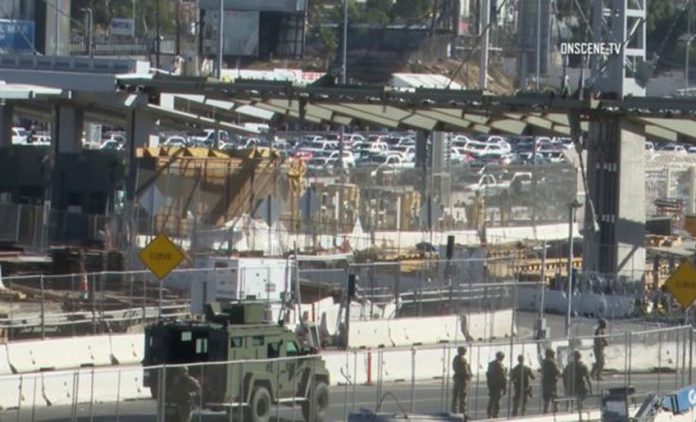When 5,000 Central Americans in a “caravan” arrived in Tijuana, it seemed every television camera in the civilized world arrived to show us the ongoing “invasion.”
Describing what the cameras saw were legions of reporters, mostly men, some of whom actually spoke Spanish. I watched them all while changing channels profusely during those hectic days last month.
They all missed a very important fact: the main encampment of Central American refugees was not just in Tijuana, it was less than 50 feet from the United States.
Whenever one of those international cameras faced north I could see something I see almost daily — the traffic on National Highway 1D that turns inland at Playas de Tijuana and then travels along the border with the United States. I live just south of Tijuana, so this highway is my 18-kilometer drive back to San Diego.
The now empty camp (the refugees have been moved several miles away to better circumstances) is covered in trash, empty of people. That is what I see from my car. The distance between the former camp and the U.S. border is exactly 42 feet. It consists of four eight-foot-wide traffic lanes, two chain link fences and a 15-foot-high barrier built by the United States several years ago to replace the Clinton-era military surplus steel panels.
On November 28, during a heavy downpour, I drove by the camp for the first time. Small dome tents covered the entire Benito Juárez soccer park. There were thousands of men, women and children who had walked and ridden over 2,000 kilometers from Honduras and Guatemala. When I drove by again on December 2, the tents and people had vanished.
The border crisis with televised tear gas billowing among men, women and children was for all intents and purposes over. Or was it just out of sight?
Most television reports concentrated on the caravan, its people and the border kerfuffle that ended in a cloud of tear gas. But that event was not the only thing going on, especially on the Mexican front.
What was Mexico to do? Act like a brutal dictatorship and tear gas and billy club the refugees, or shoot and kill them as unlawful people on Mexican territory? No.
What was the United States to do? Act like a brutal dictatorship and tear gas and billy club the refugees, or shoot and kill them as unlawful people on American territory? No.
Instead, both countries assembled ad hoc forces and set up new physical barriers to deal with refugees who tried to illegally cross the border.
The U.S. mobilized troops, laid concertina wire on top of all the fencing along the border between Tijuana and San Diego, and shut several normal crossing lanes through the San Ysidro port of entry.
The Mexicans brought more Federal Police to the border and lined up 10-foot-tall steel barriers at potential crossing points that weren’t fenced.
Luckily, the only mob action that occurred was on November 25 when a few hundred of the thousands tried running into the United States.
They were held off by uniformed Customs and Border Protection officers backed up by California Highway Patrol officers. The busiest border crossing the world was then shut for more than five hours. No one was seriously injured. Not a single Trump-ordered soldier or Marine was on the border.
Meanwhile, the intelligent business people of Tijuana, a world center for flat-screen television and medical-device manufacturing, joined with the Mexican government to organize something no one expected.
Tijuana businesses began interviewing the Central American refugees for over 5,000 jobs in the gigantic Tijuana industrial community. They interviewed and hired on the spot. The newly hired refugees then took their job paperwork over to a Mexican immigration table for a renewable “humanitarian work permit” that is good for a year.
Some refugees have registered to get into the proverbial “line” U.S. authorities have created. From that list, some 100 people a day are interviewed to start the asylum process. And some refugees decided to return home.
As I drive by the trash-covered former refugee camp, I thank the Mexican government, American border personnel and the bright people among them who ignored hysterical national media and a few local Mexicans who demonstrated against the refugees when they arrived.
The two governments quickly mobilized to defuse what could have been a serious episode resulting in injury and death that would certainly harm the reputation of the United States.
Raoul Lowery Contreras is a political consultant and author of the new book White Anglo-Saxon Protestants (WASPS) & Mexicans. His work has appeared in the New American News Service of the New York Times Syndicate.
